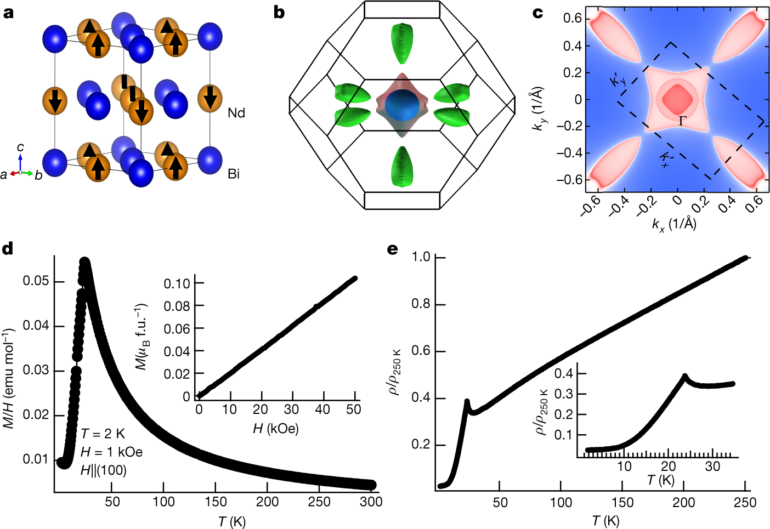An international cooperation has analyzed samples of NdBi crystals, which display interesting magnetic properties. In their experiments including measurements at BESSY II, they could find evidence for so called Fermi arcs in the antiferromagnetic state of the sample at low temperatures. This observation is not yet explained by existing theoretical ideas and opens up exciting possibilities to make use of these kind of materials for innovative information technologies based on the electron spin rather than the charge.
Neodymium-Bismuth crystals belong to the wide range of materials with interesting magnetic properties. The Fermi surface that is measured in the experiments contains information on the transport properties of charge carriers in the crystal. While the Fermi surface usually consists of closed contours, disconnected sections known as Fermi arcs are very rare and can be signatures of unusual electronic states.
Unusual magnetic splittings
In a study, published now in Nature, the team presents experimental evidence for such Fermi arcs. They observed an unusual magnetic splitting in the antiferromagnetic state of the samples below a temperature of 24 Kelvin (the Néel-temperature). This splitting creates bands of opposing curvature, which changes with temperature together with the antiferromagnetic order.
These findings are very important because they are fundamentally different from previously theoretically considered and experimentally reported cases of magnetic splittings. In the case of well-known Zeeman and Rashba splittings, the curvature of the bands is always preserved. Since both splittings are important for spintronics, these new findings could lead to novel applications, especially as the focus of spintronics research is currently moving from traditional ferromagnetic to antiferromagnetic materials.
More information:
Adam Kaminski, Emergence of Fermi arcs due to magnetic splitting in an antiferromagnet, Nature (2022). DOI: 10.1038/s41586-022-04412-x. www.nature.com/articles/s41586-022-04412-x
Provided by
Helmholtz Association of German Research Centres
Citation:
Fermi Arcs in an antiferromagnet detected at BESSY II (2022, March 23)


